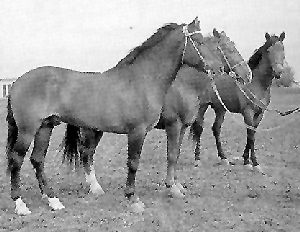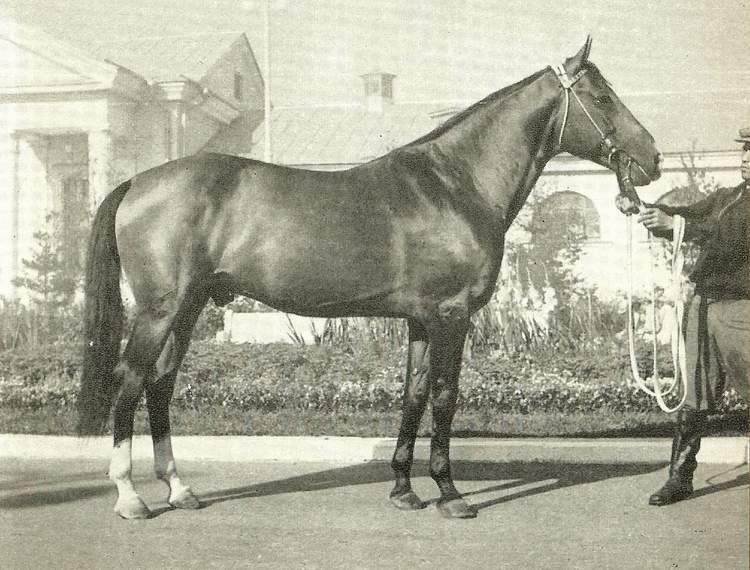

Karabair


Introduction: I believe this breed is from Uzbekistan but I have put it under Tajikistan too because of some comments in one book. If you have any comments or suggestions, please click here. The stallion in the above right picture is named Bjereg.
Names: Karabai, Karabair.
Origin: Comes from the mountains of central Asia.
Breeding: USSR, mountain regions between Kura and Arakse, Karabagh, Uzbekistan, Samarkand. Descended from the progeny of Persian and Arab horses which came to the country at the time of Arab domination. Since the annexation of the provinces on the Persian border by the Russians in the eighteenth century, breeding has gone on by selection.
Description: General impression is very harmonious.
Action: Brisk, active movements, especially in walk and gallop.
Body: High set-on, rather short neck well connected to head. Withers high and long. Back short with well-developed loins, powerfully muscled croup. Muscles extraordinarily generous.
Color: Gray, bay or chestnut. One source said the colour is a kind of golden tone with mane and tail a chestnut brown with blood-red tips, known as Sarylar. Also frequently satin grey or chestnut.
Hair: Exceptionally fine, as is skin. Mane and tail thick and soft. (One source said tail is fine and thin.)
Head: Fine and noble with slightly dished forehead. Large, fiery and rather prominent eyes. Ears well apart, small. Nostrils not quite so large and angular as the Arab. Muzzle fairly slender.
Hooves: Very hard and small; inclined to suffer from contraction of the heel.
Legs: Generally wide apart, not always quite regular yet with strong, clean tendons and joints.
Size: 14.2-15.2 hands. 15 to 15.2 hands.
Temperament: Fiery, fearless temperament and good-natured character. Easily taught.
Features: Fast. Can work in dry, hot weather. The most refined Russian steppe horse. Reminds one of the Arab on nearly all points. Has stamina, is tough, and economical.
Uses: Outstanding riding horse. Used for improving the various Russian steppe breeds.
Accomplishments:
Curiosities:
Profiles:
Conclusion: